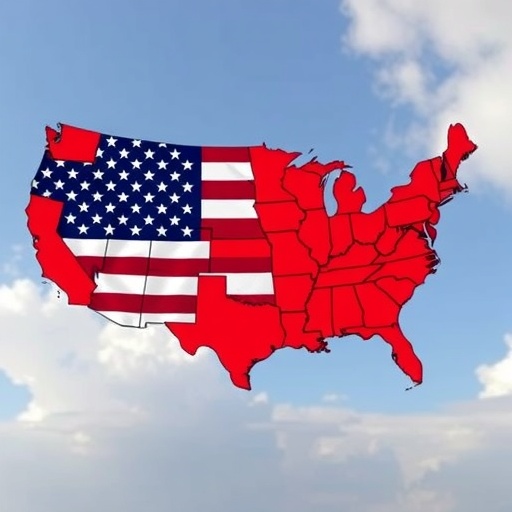Trump Immigration Policies Could Slash U.S. Workforce by 15.7 Million, Stifling Economic Growth by 2035
In a stark warning for America’s economic future, a groundbreaking study reveals that proposed Trump administration immigration policies could evaporate 15.7 million jobs from the U.S. workforce by 2035, triggering widespread labor shortages and dragging down economic growth to levels not seen in decades. This projection, based on rigorous modeling of stricter border controls, mass deportations, and visa restrictions, paints a picture of a nation grappling with demographic decline and industrial stagnation.
The report, released by the nonpartisan Economic Policy Institute (EPI) in collaboration with leading labor economists, underscores how Trump‘s immigration stance—centered on reducing both legal and undocumented inflows—threatens to exacerbate an already aging population’s challenges. “Immigration has been the lifeblood of our workforce expansion,” said EPI senior economist Heidi Shierholz. “Without it, we’re looking at a hollowed-out economy where growth sputters and key sectors grind to a halt.”
As the 2024 election cycle heats up, these findings intensify debates over immigration’s role in sustaining U.S. prosperity. With Trump’s vows to deport millions and overhaul visa programs echoing from campaign rallies, businesses and policymakers are scrambling to assess the fallout. The study’s implications extend far beyond numbers, touching on everything from farm fields to tech hubs, where immigrant labor has long fueled innovation and output.
Study Unveils Alarming Workforce Projections Under Trump Policies
The EPI study, titled “The Economic Cost of Restriction: Immigration Under a Second Trump Term,” employs sophisticated demographic and economic simulations to forecast the impacts of Trump’s immigration agenda. Drawing on data from the U.S. Census Bureau, Bureau of Labor Statistics, and historical immigration trends, researchers modeled scenarios based on Trump’s first-term actions and recent campaign promises.
Central to the analysis is the projected 15.7 million reduction in the workforce, representing a 10% drop from current levels. This figure accounts for both direct effects—like the deportation of an estimated 11 million undocumented immigrants—and indirect ones, such as deterred legal immigration through tightened H-1B visas and family-based green cards. By 2035, the U.S. working-age population (ages 16-64) could shrink by 8-12% compared to baseline projections that include moderate immigration inflows.
Key assumptions in the model include a 50% reduction in annual legal immigration (from about 1 million to 500,000) and aggressive enforcement leading to 2-3 million deportations per year. These policies, the study argues, would not only remove current workers but also prevent future contributions from immigrants and their U.S.-born children, who often enter the workforce decades later.
“We’ve seen glimpses of this in Trump’s first term,” noted Shierholz in an interview. “Deportations rose 30% from 2016 to 2020, and visa approvals for skilled workers plummeted. Scaling that up could cascade into a workforce crisis.” The report contrasts this with projections under Biden-era policies, which predict steady workforce growth of 1-2% annually, bolstering GDP by trillions over the next decade.
To illustrate the scale, consider that the U.S. added 2.5 million immigrant workers between 2010 and 2020, offsetting baby boomer retirements. Without similar inflows under Trump immigration policies, the study warns of a “demographic cliff,” where labor participation rates fall below 60%—a level unseen since the Great Depression.
Key Industries Brace for Crippling Labor Shortages
No sector stands to suffer more from these Trump immigration policies than agriculture, construction, and healthcare, where labor shortages could balloon into full-blown crises. The EPI report details how immigrant workers, who comprise 25% of the farming workforce and 17% of construction laborers, are indispensable to these industries’ survival.
In agriculture, for instance, undocumented immigrants harvest over 70% of U.S. fruits and vegetables. A mass deportation push could idle 1.5 million farm jobs by 2030, leading to crop losses estimated at $60 billion annually. “We’ve already got shortages driving up food prices,” said Tom Vilsack, former USDA Secretary, in a recent panel discussion. “Trump’s plan would turn grocery stores into battlegrounds for affordability.”
Construction faces a similar reckoning, with the industry projected to lose 2.8 million workers by 2035. Immigrants fill critical roles in building homes, infrastructure, and commercial projects; their absence could delay major initiatives like the Infrastructure Investment and Jobs Act, inflating costs by 20-30%. The Associated General Contractors of America has warned that such labor shortages under restrictive immigration could add $1.2 trillion to housing prices nationwide.
Healthcare, already strained by an aging population, could see 1.2 million nursing and aide positions go unfilled. Immigrants make up 18% of home health workers, a field expected to grow 25% by 2030. “Without immigrant labor, we’ll have wait times for care that rival third-world nations,” cautioned Dr. Atul Gawande, a prominent health policy expert.
Even high-tech sectors aren’t immune. Trump’s proposed caps on H-1B visas could slash the influx of skilled immigrants, who account for 75% of Silicon Valley’s engineering talent. Companies like Google and Microsoft have lobbied against such restrictions, citing past disruptions that cost the tech economy $100 billion in lost productivity.
These labor shortages ripple through supply chains, potentially increasing unemployment in complementary roles and fueling inflation. The study quantifies a 15-20% rise in wages for low-skilled jobs to attract native workers, but warns this won’t fully compensate for the talent gap.
Economic Growth Faces Drag from Immigration Clampdown
Beyond immediate job losses, the broader canvas of economic growth under Trump immigration policies reveals a troubling slowdown. The EPI models predict U.S. GDP growth averaging just 1.2% annually from 2025-2035, compared to 2.1% under status quo immigration levels—a cumulative loss of $8.5 trillion in output.
This deceleration stems from reduced consumer spending, innovation, and investment. Immigrants contribute disproportionately to entrepreneurship; they start 55% of new U.S. businesses and hold 25% of patents. Curtailing inflows could stifle startups in emerging fields like AI and renewable energy, where foreign-born talent drives 40% of breakthroughs.
Federal revenues would also suffer, with the study estimating a $1.2 trillion shortfall in tax collections by 2035 due to a smaller taxable workforce. Social Security and Medicare, reliant on payroll taxes from current workers to fund retirees, face acceleration of insolvency—potentially by five years.
Historical parallels abound. During the 1920s immigration quotas, U.S. growth lagged behind more open economies like Canada. Today, as global competitors like Australia and Germany liberalize skilled migration, America’s inward turn under Trump could erode its competitive edge. “Economic growth isn’t just about borders; it’s about brains and brawn from around the world,” remarked economist Paul Krugman in a New York Times op-ed responding to the study.
Inflationary pressures add another layer. Labor shortages would hike production costs, with the report forecasting a 2-3% annual uptick in consumer prices for essentials like food and housing—hitting low-income families hardest and widening inequality.
Experts and Stakeholders Sound Alarm on Policy Ramifications
The EPI findings have ignited a firestorm of commentary from economists, business leaders, and even some conservatives wary of the economic toll. “Trump’s immigration vision ignores the math: we need workers to grow, not walls to shrink,” said Mark Cuban, entrepreneur and vocal policy critic, on a recent podcast.
Immigration advocates like the American Immigration Council echo these concerns, citing data that immigrants boost wages for native-born workers by 1-2% through complementary skills. Conversely, restrictionist groups such as the Federation for American Immigration Reform argue the study overstates benefits, claiming deportations would prioritize American jobs. However, the report counters with evidence from Trump’s first term, where enforcement spending rose 80% without net job gains for natives.
Business coalitions, including the U.S. Chamber of Commerce, have mobilized, urging a balanced approach that secures borders while expanding legal pathways. “Labor shortages are already our top concern; Trump’s policies would make it existential,” stated Chamber President Suzanne Clark in a statement.
Politically, the projections complicate Trump’s narrative. While polling shows support for tougher immigration, economic anxiety could sway undecided voters. Democratic strategists are leveraging the study in ads highlighting risks to “hardworking American families.” As midterm elections approach, expect immigration to dominate town halls and policy briefs.
Internationally, the policies could strain alliances. Countries like Mexico and India, major sources of migrant labor, have signaled retaliatory measures, such as tariffs or reduced cooperation on trade—further crimping U.S. economic growth.
Charting a Path Forward Amid Demographic Pressures
Looking ahead, the study calls for urgent reforms to avert catastrophe, including targeted visa expansions for essential workers and pathways to citizenship for long-term residents. Without action, by 2040, the U.S. could face a workforce 20% smaller than projected, amplifying challenges from automation and climate migration.
Policymakers must weigh these projections against security imperatives. Bipartisan commissions, like those post-9/11, could bridge divides, focusing on tech-enabled enforcement paired with merit-based immigration. States like Texas and California, ground zero for labor dynamics, are piloting programs to attract domestic talent, but experts doubt they can fill the void alone.
For businesses, diversification strategies—such as automation investments and remote work hubs—are gaining traction, though costly. Philanthropic efforts to upskill native workers, funded by tech giants, aim to mitigate shortages in STEM fields.
Ultimately, the trajectory of Trump’s immigration policies will define America’s economic resilience. As the nation stands at this crossroads, the choice between restriction and renewal could determine whether the U.S. thrives as a global leader or fades into demographic irrelevance. With elections looming, voters hold the key to unlocking—or locking—a prosperous future.








